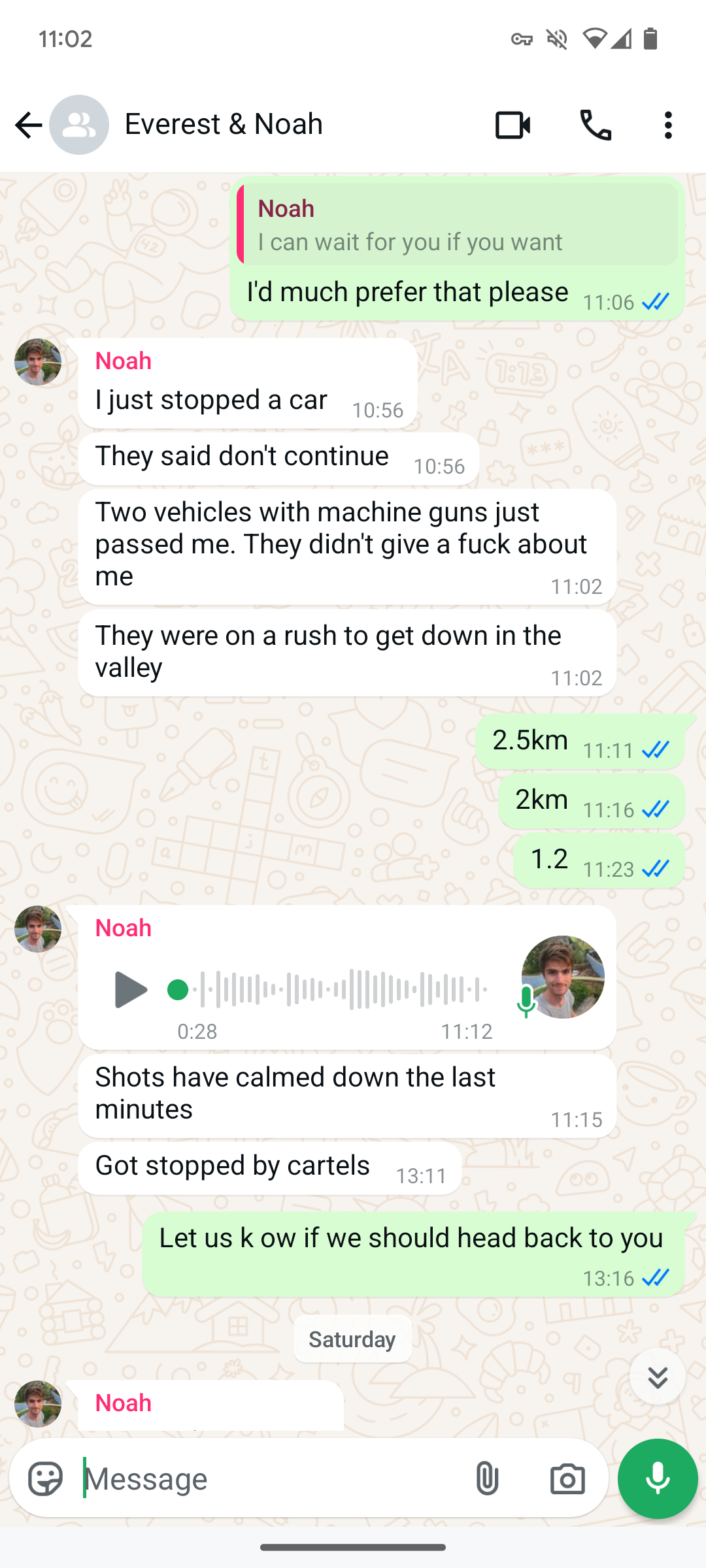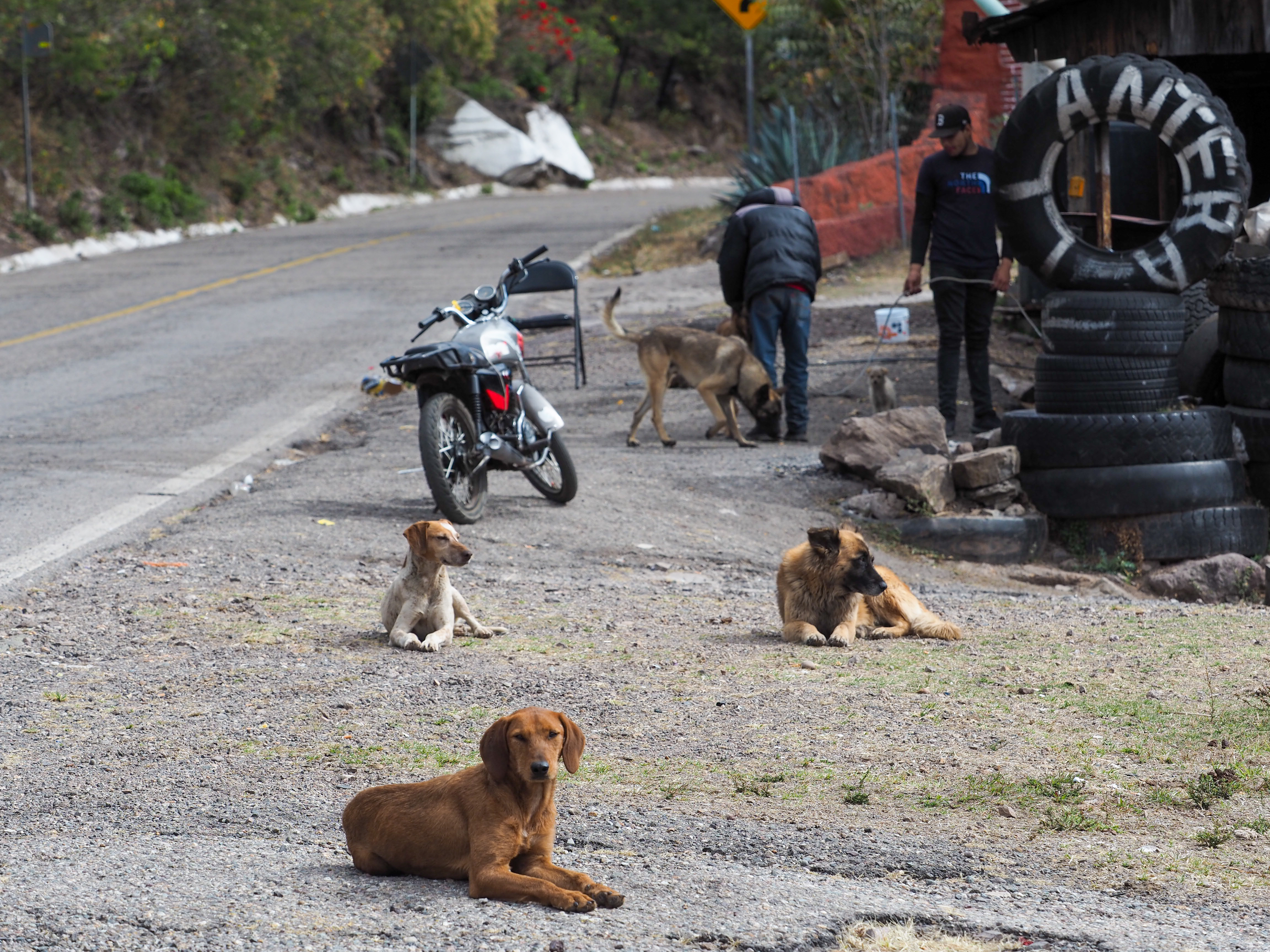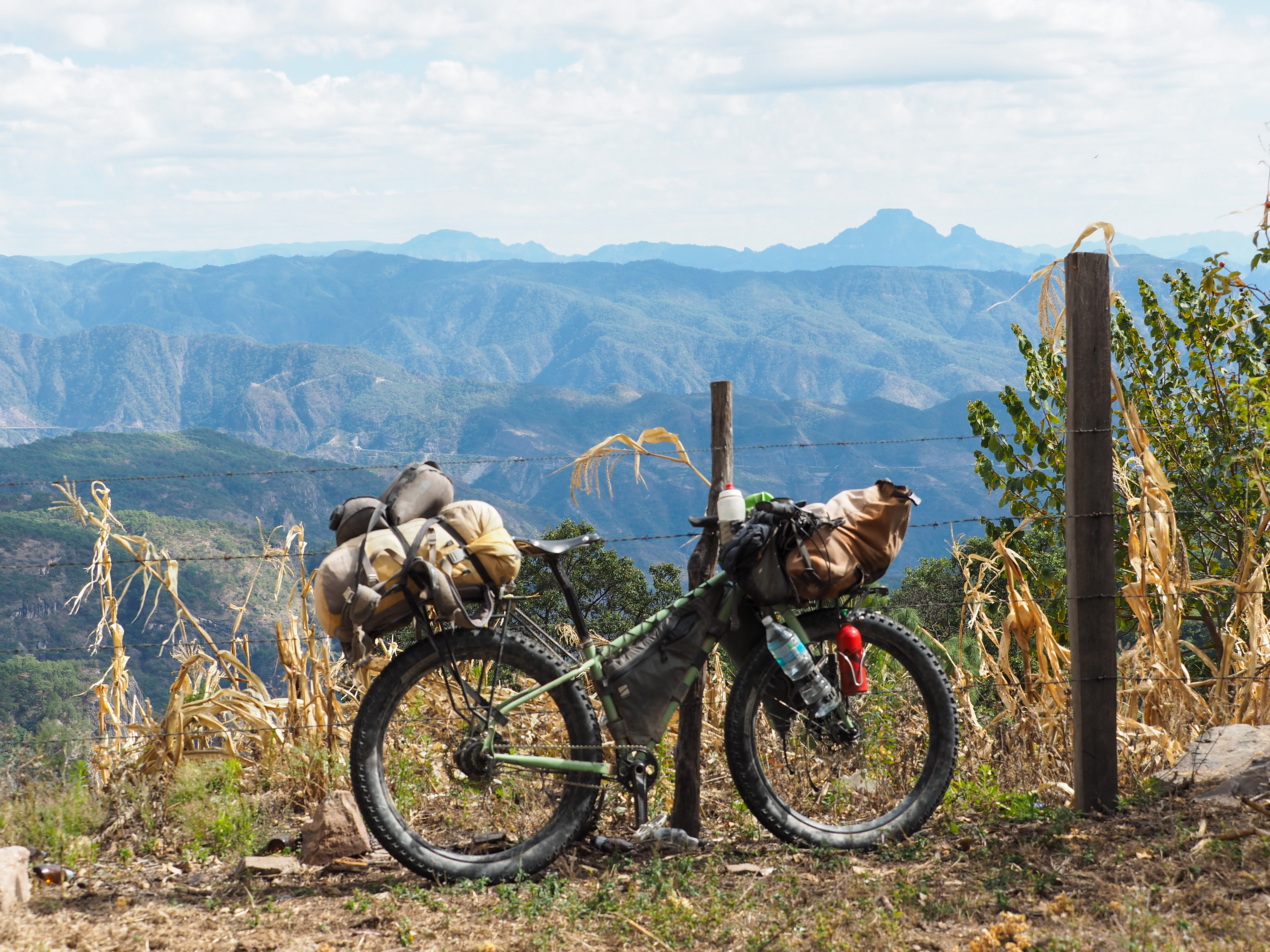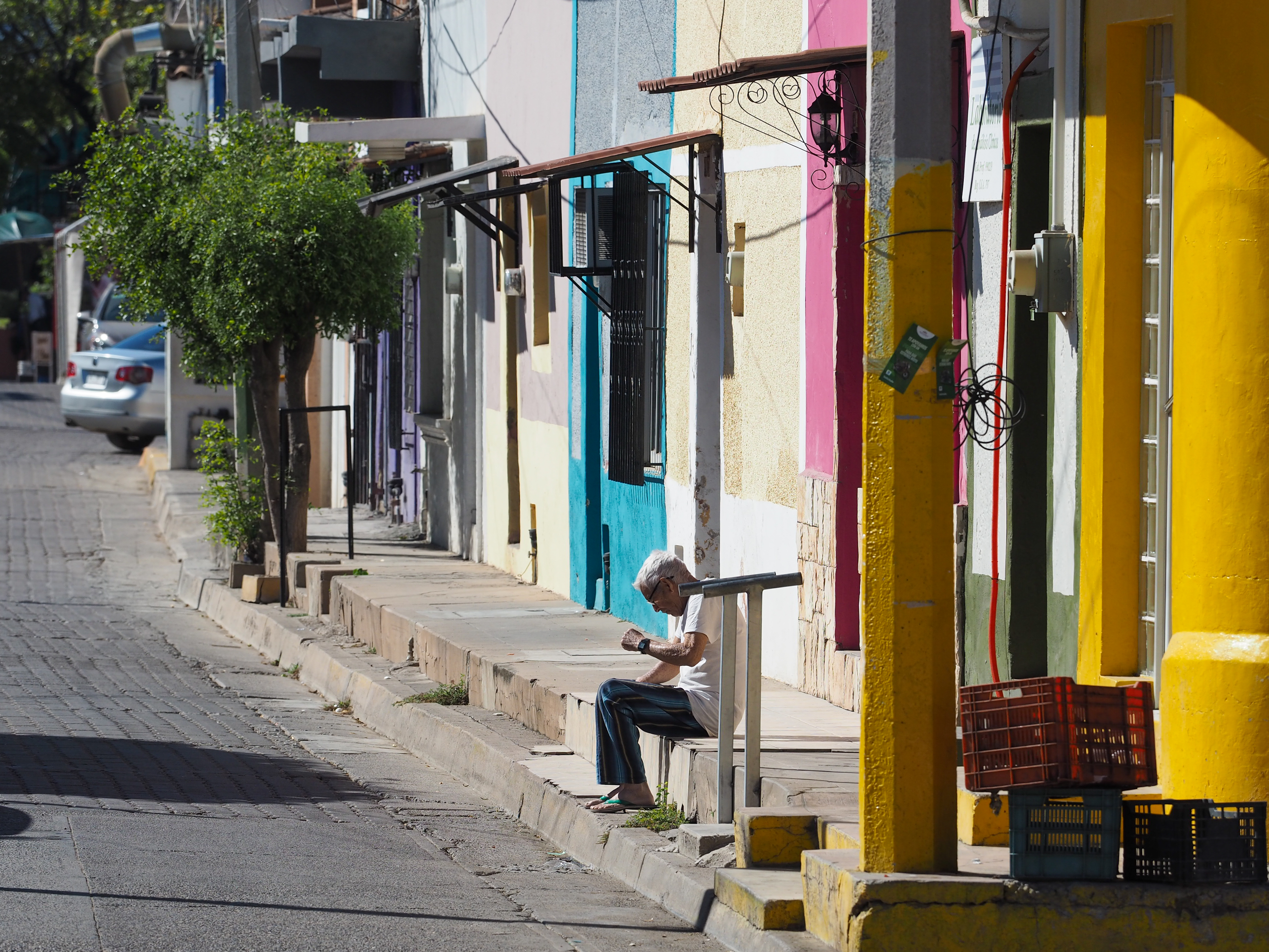Cartel Shooting in Mexico
The drug cartels have given Mexico a bad reputation for its safety, with many even adventurous travelers skipping this beautiful country filled mostly with kind, loving people. Traveling opens you up to reality, often very different from what people think of a place. But it’s also all too easy to project an all too limited view of a short time during which there were no issues. I have this challenge when telling people my home country South Africa is more dangerous than most countries I cycled through from Egypt to South Africa (Ethiopia being the only one I consider worse), and cyclists from other countries say they had no safety issues. I still wouldn’t tell people not to go there, whether by bicycle or other means. I just tell them to be cautious and know the threats wherever they go, ask locals, learn to gauge from them how bad it really is rather than taking their literal word, and be extra cautious about the routes you take through any major city.
After two months in Baja, perhaps the safest place in Mexico, three of us took the ferry to Mazatlán. We had three options if we wanted to stay on our bikes. Riding to Durango meant a couple of days riding through Sinaloa, a state largely controlled by the cartels. I personally put the risk of something bad happening at 5%, but the other two downplayed the risk. There was the option of riding along the coast, partly on the beach, to Tepic, but locals had told a couple that it wasn’t safe either. The only safe option seemed to be riding along the highway to Tepic, which although the safest also appeared to be the least interesting. The other two were going to ride to Durango, so I figured I’d be safer if I joined them. Given our experience, and what locals have since told us, I strongly encourage future travelers to think carefully and understand the risks adequately before taking this route.
There are two tarred roads from Mazatlán to Durango: the old highway (40),and a new super highway with tunnels and bridges (40D). Since most traffic is on the 40D, the cartels occupy the fairly quiet 40. We took the 40. Most cyclists report being stopped and questioned by cartels. This usually entails handing over ID, explaining who you are and why you’re here. Sometimes they take your phone and camera and search through your photos. They’re usually quite pleasant, and have no reason to harm you. Your safety is actually in their interests, as they don’t want the US to get involved. I heard a story of the cartels beating up and tying up a couple killers for the police to find, so they themselves wouldn’t be seen as a threat to US travelers. We had one encounter with a cartel member questioning one from our group before the shooting we’d soon encounter. They had a French tourist in the back, who told him to comply. He had lost his passport, and the French embassy wouldn’t give him a new one. He walked all the way from Mexico City to Tijuana, where the police arrested and beat him up. He was then making his way back, and the cartels were giving him a ride. There’s obviously backstory we don’t have, but it’s fascinating how the police beat him up while the cartels appear to be helping him.


An hour into our second day, Noah was ahead and sent the messages above. Already from 5km away, I could hear the shots. It sounded serious. A local called out to me and we tried to communicate with my poor Spanish. I figured it was safe to reach Noah. It took me a while, as I’m much slower, but when I did we largely waited. The gunshots were almost constant. DJI drones were flying right overhead. Even bombs were being dropped every few minutes. I got in contact with Mexicans, including one who used to live in the city of Durango. I also kept my family updated since the first message from Noah, including giving them my coordinates. The gist I got was that we were reasonably safe, but that we should remain where we were.


Two cars with machine guns drove past without stopping. Then a cartel member carrying a machine gun stopped to talk with us. He asked for ID, and when he realised we weren’t American he was quite chill and said we’d be safe especially on bicycles. We eventually decided to descend the 2km into the valley, where there was a slightly bigger community of Santa Lucía. We stopped outside a tienda (small shop), bought a few things and asked about the situation. It was hard to tell from them, but they seemed to indicate we could camp outside. We were considering that, until the shooting eventually ended and the military showed up.

The military showed up in four vehicles. Two soldiers walked up to us. We showed them ID, and told them what we were doing. They were clearly shocked that we were even here. Mexico doesn’t get that many foreign bike tourers, except for Baja. Another soldier approached and spoke good English. Noah joked, “is this your training?” The soldier wasn’t impressed. We asked what the situation was like ahead. Our understanding was that the state of Durango was under military control and safe, and we just had 30km (and a whole lot of climbing) to get there. They said it was indeed safer, but not that it was safe. I asked about Zacatecas. They said it was unsafe. Jalisco? Unsafe. Everywhere was unsafe in their mind. They gave us cans of tuna and water, and then the idea of them offering us a ride came up. Where to though? At first they just wanted to get us out of Sinaloa, which would have been ideal. Then they decided it would be safer for us to ride on the main highway, and offered to take us to where the two roads met about 10km ahead. They said it was just a 2 hour ride by bicycle to the next town. That didn’t sound right, so I asked them to point out where they’d drop us off on a map. They couldn’t find the place. We figured let’s just take the ride and see where we end up. They dropped us 4km down the main highway, with a super long way that we couldn’t even make in a full day to the next reasonable stop. The main highway just had a lot less. So we backtracked to the 40, and rode a total of 9km to the tiny settlement of Potrerillos, which had a small shop. We camped in the plaza, where we had drinking water. The locals said it was safe. No more gunshots, thankfully, and no dogs yapping all night. Just noisy cocks. The military passed by us around sunset and again in the morning. We even passed a security checkpoint. So it certainly seems safer here in Durango.
What next? We’re still making our way to the city of Durango, where we’ll talk to locals and evaluate how to get to Zacatecas City. The locals where we are now say the state of Zacatecas is better than Sinaloa, but worse than Durango. Another group of cyclists who encountered shooting in Sinaloa said they bussed to Zacatecas City. It’s an ongoing case of asking locals as we proceed, as those further away are less updated on the reality of each region. Would I recommend taking this route? If you understand the risks and know how to react when things turn bad, then yes I think it’s fine. I would probably still ride this road again. It’s incredibly beautiful. Many cyclists say it was their favourite in all of Mexico. Any traveler doing what we do needs to know how to evaluate the risks, combat complacency, and make their own decision. I know many who aren’t coming here because of the cartels. But I’ve also had the experience of growing up in a country with its own problems, and have cycled through Ethiopia which I think is worse than Mexico. Perhaps the biggest challenge in reality is that of communication. They speak so fast, it’s hard to make much sense of what they’re saying, and not understanding them could come across the wrong way and lead to bigger problems. The biggest advic I have for anyone traveling here is to make it clear to cartels that you’re not American. If you are American though, then no offense but I don’t know how to help you in this country.
You can follow the rest of my journey on Instagram.



Comments